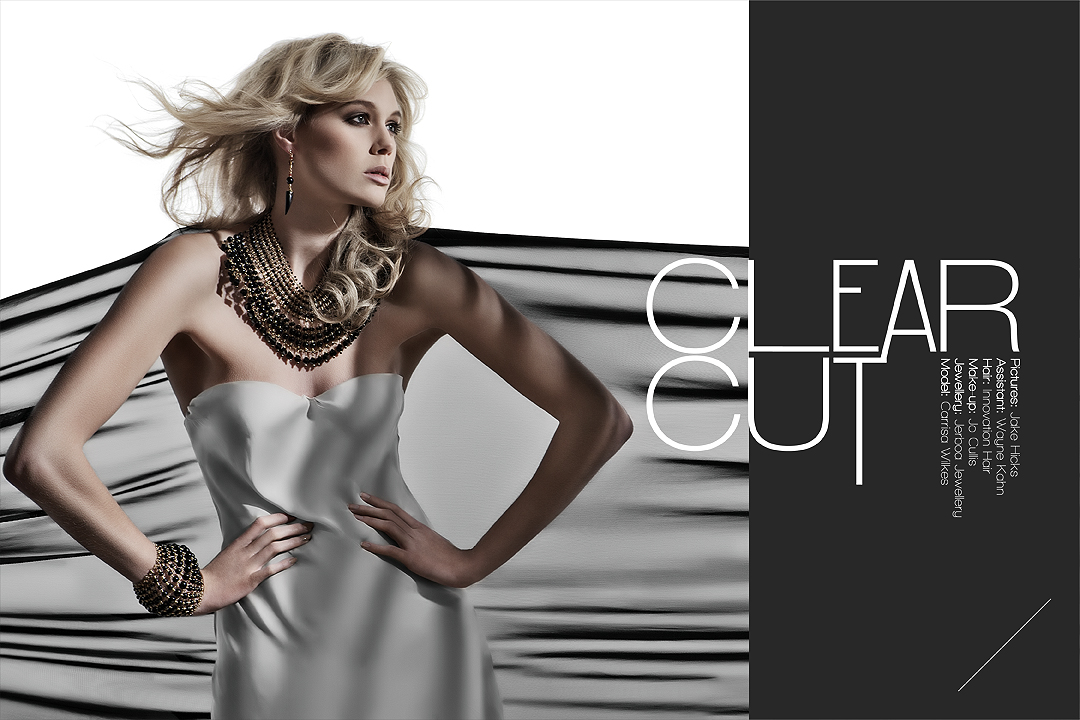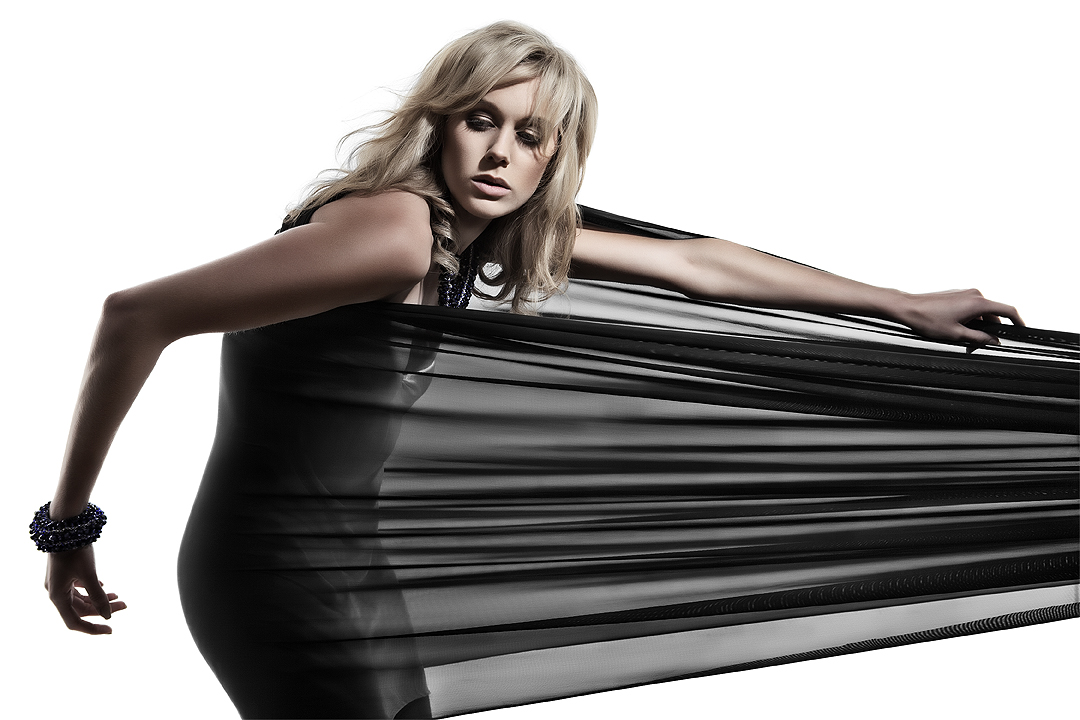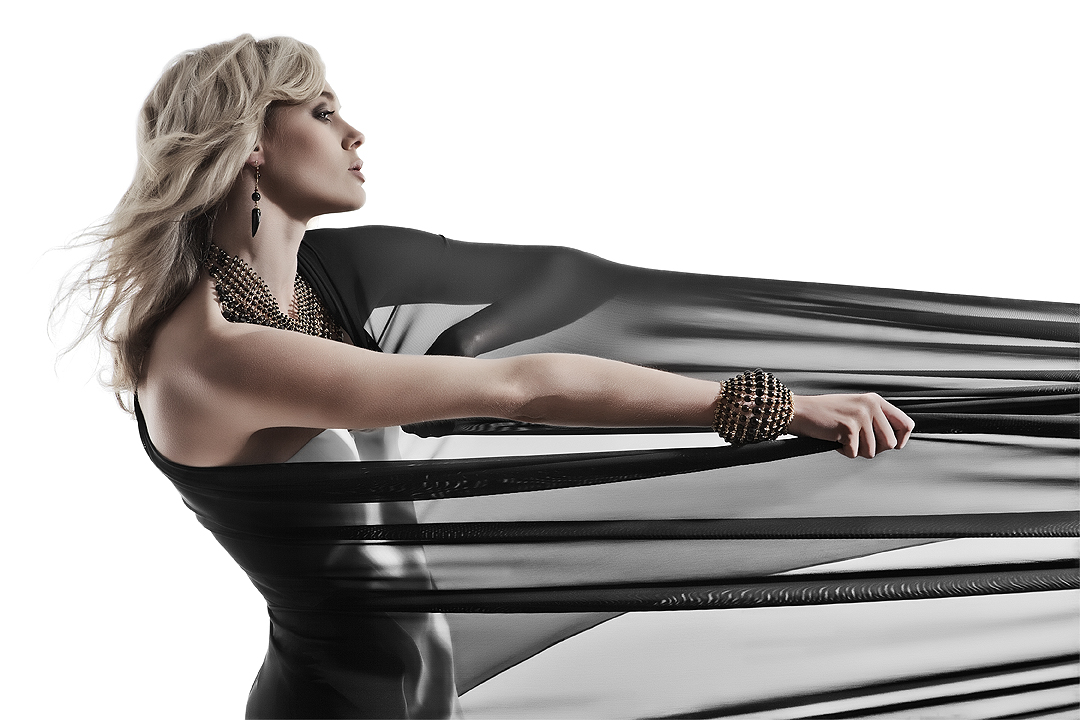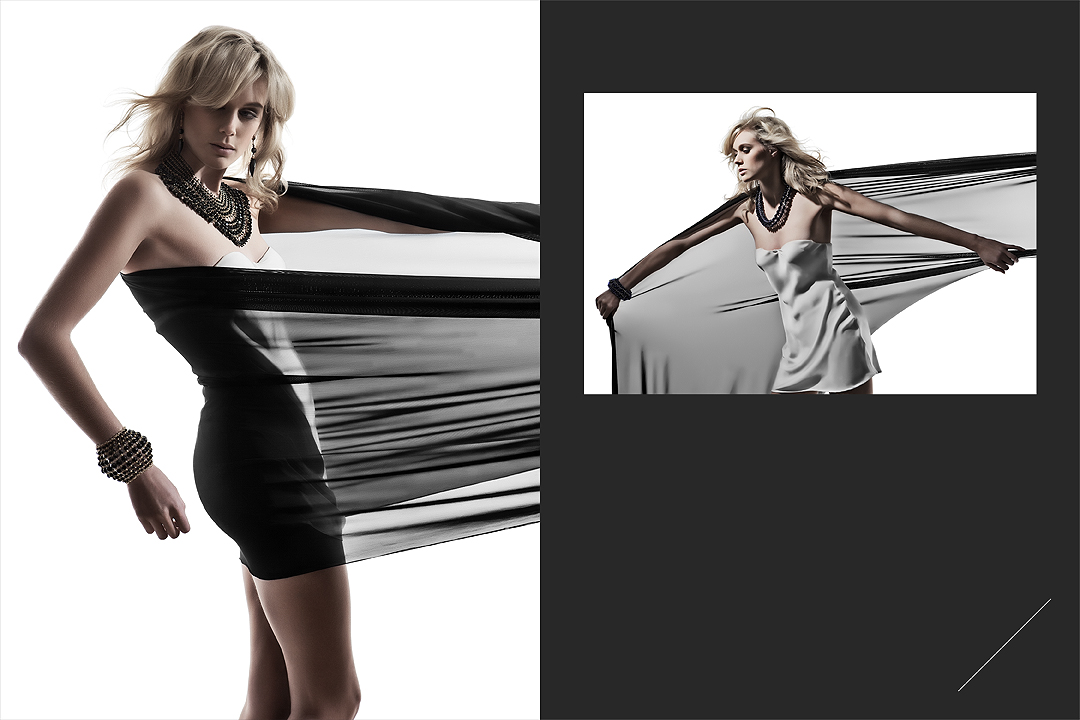Very nearly every image we view in print or online now has seen some form of digital enhancement. By enhancement I am referring to the commonly perceived idea that it is standard to have photographs that are brighter, sharper with vibrant colours and portraying people with blemish free radiant complexions. In fact without consciously knowing it so many of the images we all see day to day (well into the thousands) have had this baseline treatment that when we actually do see an image 'straight from camera' it looks grey, flat and soft; anything but amazing.
 Before and after images of the post production process
Before and after images of the post production processAs a result it is now a prerequisite for all photographers to make sure that all their images are 'enhanced' before anybody views them
(press photographers being the exception, digital manipulation on their part comes with serious legal repercussions). Before digital, analogue printing was very time consuming, expensive and also involved working with potentially harmful chemicals, it had a commonly known reputation for being a 'black art' that very few people could truly master. Conversely modern digital processing has a general misconception that a few button clicks and software filters can quickly generate advertising campaign quality pictures. One of the reasons for this delusion is because photographs that have had the best retoucher's working on them look like nothing has really been manipulated. Any editorial image that you look at and think that the subject doesn't look natural or fake has been badly or quickly retouched.
 So how long does it take to get an image ready for a client, advert, magazine, billboard? This can vary drastically, some photographers do all their retouching themselves, this makes up the majority, and the very high end work for front covers and billboards etc are farmed out to highly professional and dedicated retoucher's. These work horses are plugged into the whole process and know everything there is to know about the end product and all the profiles, gamut's and colour spaces in-between. Most of the images they work on will be shot on extremely high resolution cameras and as a result they will have a huge number of pixels to manipulate on the page, it would not be uncommon for them to spend over 20 hours on each image. The rest of us who work on our own images can at least take some solace in that we know our own gear and 'usually' have a clear idea in mind of how the final image will look when we start. When we first dip our toe into the vast sea of digital manipulation most of us will start out with the usual button pressing, running downloaded actions and presets and third party plug-ins, but as we slowly realise the potential power of the latest software we add more and more steps to our workflow. in short, the more skilled we get at 'pushing pixels' the longer it takes us to finish the post production of a photograph because there is always something else that can be done to improve the image, it is up to us to restrain ourselves and finally say enough is enough.
So how long does it take to get an image ready for a client, advert, magazine, billboard? This can vary drastically, some photographers do all their retouching themselves, this makes up the majority, and the very high end work for front covers and billboards etc are farmed out to highly professional and dedicated retoucher's. These work horses are plugged into the whole process and know everything there is to know about the end product and all the profiles, gamut's and colour spaces in-between. Most of the images they work on will be shot on extremely high resolution cameras and as a result they will have a huge number of pixels to manipulate on the page, it would not be uncommon for them to spend over 20 hours on each image. The rest of us who work on our own images can at least take some solace in that we know our own gear and 'usually' have a clear idea in mind of how the final image will look when we start. When we first dip our toe into the vast sea of digital manipulation most of us will start out with the usual button pressing, running downloaded actions and presets and third party plug-ins, but as we slowly realise the potential power of the latest software we add more and more steps to our workflow. in short, the more skilled we get at 'pushing pixels' the longer it takes us to finish the post production of a photograph because there is always something else that can be done to improve the image, it is up to us to restrain ourselves and finally say enough is enough.
The time lapse video shown here demonstrates my retouch process of a single image from a shoot where five images were chosen to be retouched. The image illustrated involved what I would call a standard retouch, nothing to drastic needed to be done, no awkward hair extracting, no removal of products and not even retouching the full body. That being said the image took over two hours to retouch not including editing and raw processing and with 4 other images in the set I spent well over ten hours in post production time. That may not seem a huge amount of time when you consider the time high end retoucher's spend on each image but it does sound like a huge amount of time when you consider I actually only spent 45 minutes shooting them.
One of the biggest problems we have now as professional photographers is justifying the post production time versus cost. In the past it used to be a flat day or half day rate, if we build an invoice based on those times and figures now we would quickly go hungry. We are falling into the trap of becoming so good at post production that the images look like we haven't touched them, they look exactly as the client expects to see them, the same as all the other thousands of images around them, amazing.












